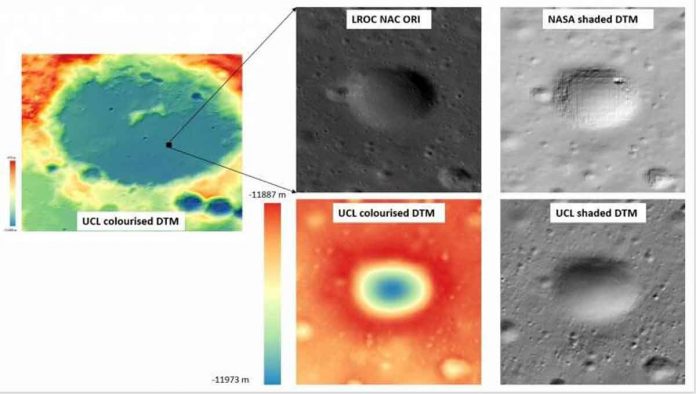The first stage of NASA’s Artemis mission, an unmanned test flight around the moon, was set to launch on Monday (29 August 2022). Humans will land on the moon for the first time in more than 50 years in the third phase, which is scheduled for 2025.
Professor Jan-Peter Muller and Ph.D. student Alfiah Putri (both of UCL Mullard Space Science Laboratory) were commissioned by NASA’s Jet Propulsion Laboratory (JPL) to create a 3D model and image of Aristarchus, a crater 40km wide and nearly 2.7km deep that was originally chosen as the landing site for the cancelled Apollo 18 mission.
The team used a photogrammetry technique they invented to create a detailed 3D model with a one-meter resolution from a series of 14 stereo images (where pictures are taken of the same scene at slightly different angles).
Professor Muller claims “Better quality maps and models of the moon’s surface are critical for minimising risks and maximising astronaut safety. Our techniques, refined over decades, produce the most accurate images and models available today. These can aid in the selection of landing sites and navigation routes for rovers or manned vehicles.”
Professor Muller and research associate Yu Tao (also from the UCL Mullard Space Science Laboratory) have developed a new method that eliminates the need for high-resolution stereo images, which are rare on the moon. After training with nearly 400 pairs of images and their corresponding stereo-derived 3D models created by NASA’s camera team, this method predicts 3D shapes using machine learning.
The team used this new method to create a large 3D mosaic covering an area of 260 km x 209 km, which was processed using machine learning from 370 images of the von Kármán crater on the Moon’s far side (the crater is 180km in diameter and up to 12 km deep).The MSSL team created a technical report that thoroughly examined the images and 3D model.
The 3D model and accompanying mosaiced image, with a resolution of 50cm, are now viewable on NASA’s web-based portal Moon Trek, which provides a suite of interactive tools for exploring the moon and was created for mission planners, space scientists, educators, and other interested parties.
Professor Muller and his team’s techniques, applied to images of Mars’ surface, previously assisted in unravelling the mystery surrounding the ill-fated Mars lander Beagle 2. They captured higher-resolution images of the lander on the Martian surface, indicating that it successfully landed.
NASA has announced 13 potential landing sites for their crewed mission to the moon, all near the lunar south pole, where water-ice is thought to have accumulated over billions of years in permanently shadowed areas. These locations will now be thoroughly researched before any spacecraft attempts to land there.
UCL-MSSL is expected to provide additional 3D images of the Artemis landing sites in the coming year. The ESA Planetary Science Archive Guest Storage Facility will make all of these 3D data products available.

